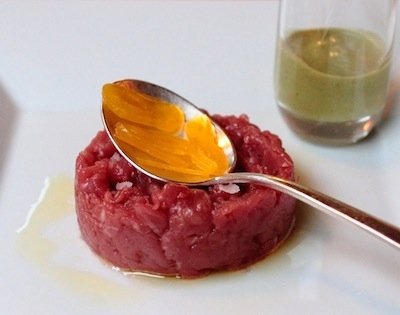Piedmont is a land for gourmands: what with white truffle, Barolo and Barbaresco there are some excellent reasons to stop among these hills and enjoy the local products. In this list, it is obligatory to add also the Fassone, or Razza Piemontese meat. One of the most precious breeds of cows in the world, in fact, it is named after this region. Its origin dates back to the Pleistocene era, in an area which is now Italy’s North-West, to be precise, which at the time was the home to a breed called Aurochs. This was a non-migratory breed, because of the swamps that would later become the Pianura Padana, so it kept its genetic heritage intact.
Over 20 thousand years ago, in the same territory arrived herds of zebu from Western Pakistan, which had to stop on their journey towards Western Alps and remained in Piedmont, mixing with the local breed. Over time, some sub-species developed and today we can count 900,000 animals. The main cow breeds of Piedmont are Piemontese, Frisona, Bruna, Valdostana but there are also French breeds (the cows are weaned in France and then brought to Italy).
So what lies behind such a precious breed like the Razza Piemontese ?
Used by Piedmont’s farmers as a source of meat, milk and labour, the Fassone breed has been used in the rural world for a long time. The breeding, in Piedmont, dates back to the beginning of the 19th century but its “gastronomic” fame became to spread, in fact, only in the second half of the same century, thanks to a character which appeared as a mutation: the muscular hypertrophy (or gigantism) that affects thighs, buttocks and neck.
The name Fassone is linked to this very reason, as in French it is called
culard or
de façon. In the beginning this aspect was considered negative, then this genetic character was in fact reproduced: studies demonstrated that with this growing of the muscles there was also a reduction of the intramuscular fat and of the connective tissue, which made the meat softer and leaner. Today this breed is widely used in Europe, United States, Canada, Brazil and China thanks also to the longevity and strength of these cows and to their adaptability to the surrounding environment.
Mostly bred in the central and southern part of Piedmont, between the provinces of Torino, Asti and Cuneo, it has a light grey or fromentino coat (this term is used to indicate a blond-golden coat), with darker shades on neck, thighs and shoulders and a rich black colour around the eyes. Its meat is of the highest quality thanks also to the improvements made by geneticists and science over the years.

Razza piemontese, at the roots of great tartare (photo by Passione Gourmet)
The
Anaborapi –
Associazione nazionale allevatori bovini di Razza Piemontese – selects and improves the genetics of the Razza Piemontese. The ecosystem also helps in making sure that the breed develops at its best: the breeding implies a nourishment made exclusively of hay (60% of the cow’s diet), cereals and legume (40%), so the cows can grow healthy and without any chemical contamination throughout all the processes, from slaughter and hanging to the transportation and preserving. The meat for which all these conditions have been followed, is a balanced food, both with reference to the quantity and quality of the fat. It contains a low percentage of cholesterol in all its parts.
1. to be continued